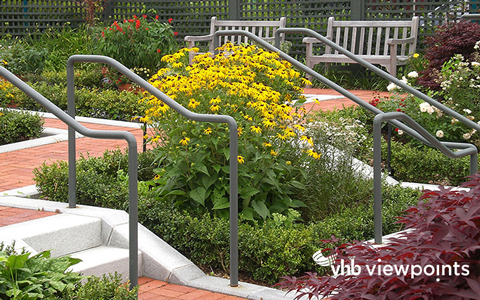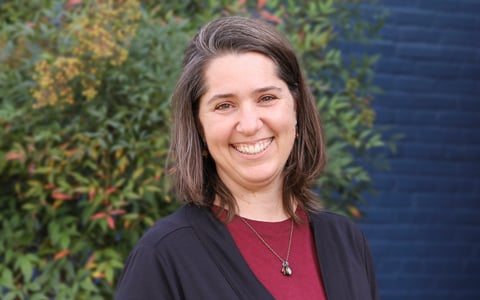
Charlene Harper, PE, PLA, is a dynamic and passionate VHB leader who joined us with the acquisition of HG Design Studio last fall. With more than 28 years of experience, Charlene is one of few industry professionals who hold a professional license in both civil engineering and landscape architecture. Her combination of skills and knowledge is already propelling VHB projects forward with a true partnership between disciplines—heightening collaboration, innovation, and the integration of sustainability on significant projects like Dominion Energy’s Clean Energy Park and Westminster-Canterbury Richmond Expansion.
During the month of April, as VHB recognizes World Landscape Architecture Month, we're celebrating the contributions made by individuals like Charlene who are enhancing our communities and improving connectivity—all with people and purpose in mind.

VHB: We’re curious to learn more about your journey towards obtaining both your Professional Engineer (PE) and Professional Landscape Architect (PLA) licenses. Could you walk us through your initial interest in both fields, and what led you to pursue those studies?
Charlene: I first obtained my degree in civil engineering at Virginia Tech. I didn't know about the profession of landscape architecture (LA) until I worked my first job at a Maryland engineering consulting firm more than 28 years ago. I started at the firm in a water resource department but moved into land development when the water resource department shut down. That's when I started to see the overlap between LA and civil engineering in a site development context as we all worked together in one department. As the engineers designed the placement, size, and capacity of utilities, landscape architects determined the layout, grading, and placement within landscape features. My focus was on low impact development, stormwater management, and sustainability—the nexus between the two disciplines. At one point, I wanted to get a master's degree in LA, but there was no part time program at the time. Instead, I worked to position myself under a LA so that I could gain experience.
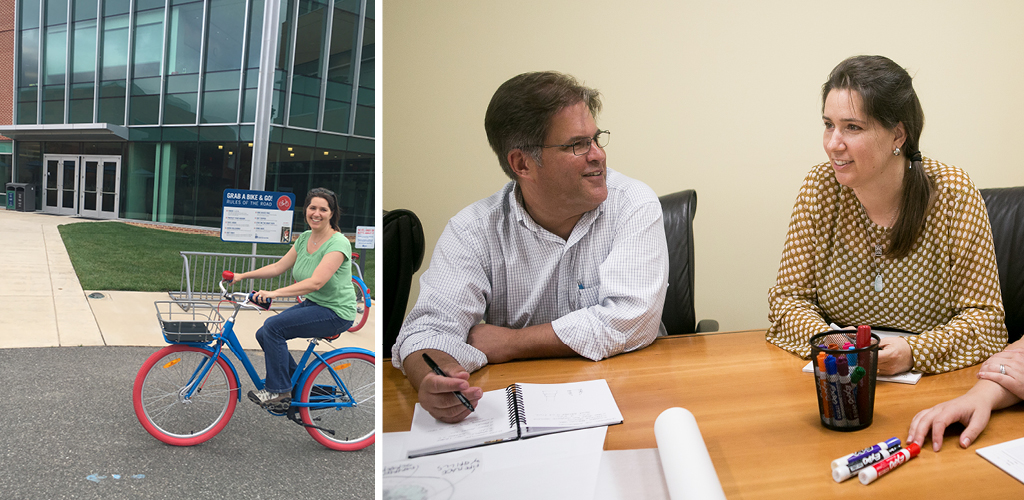
VHB: That’s not a common trajectory in our industry. Typically, these disciplines remain very distinct. What's one piece of advice you would give to engineers from your landscape architecture perspective and vice versa?
Charlene: I would give the same advice to both disciplines: open your mind, get curious, and ask a lot of questions. The more you can understand what your counterparts are trying to accomplish, the better you can work together to make that vision come to life and get the best result for your client. When you understand the big picture, it makes you more flexible. We all have our own set of regulatory requirements and goals to meet, but as we work through them, collaborating throughout the process allows us to challenge each other and elevate the final product to meet all goals in the most successful way possible.
One project that I think is the epitome of our blended practice is the Davenport Field Renovation at the University of Virginia (UVA). There was a lot that went into the logistics of this program because the site functions very differently depending on whether it’s a gameday or not. Originally, our project scope did not include a landscape architect, but we enlisted landscape architects because of the amount of insight we could bring on how the site would flow for pedestrians, vehicles, and maintenance activities. That collaboration resulted in significant improvements to the function and flow of the site, including safer pedestrian access routes; elegant entry sequences for game day VIPs and students alike; increased parking capacity using permeable interlocking concrete pavers; reduced utility maintenance needs through a new gravity sewer; and easily accessible, but hidden field maintenance operations.
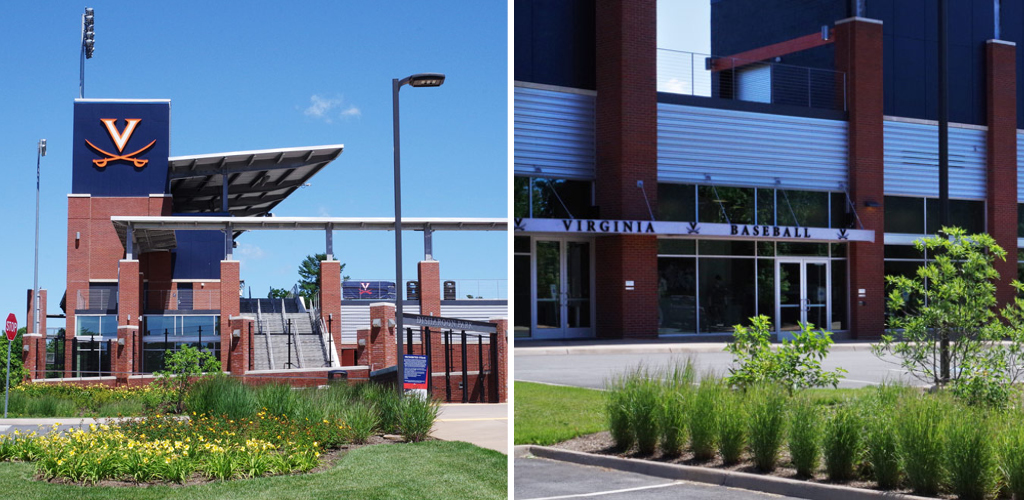
VHB: Collaboration is such an important part of any project. Can you share with us how you approach it with each?
Charlene: Regardless of the scope, I try to work with a blended team of landscape architects, civil engineers, and additional disciplines, such as transportation or environmental, as needed. If it's not practical to have a blended team given the scope, I still try to share the project with folks in discussion to gain different perspectives. Since joining VHB, we've organized our seating arrangements to scatter and intermingle various disciplines together to help foster cross-collaboration. I share a space with a transportation engineer, and it's been so valuable to listen and hear another discipline's approach to projects. We want our teams to learn from each other, ask questions, and continue to learn, which has heightened creative collaboration across the office.
We also have Dave Gerstenmaier serving in a role that supports this approach by being a mentor to project managers. Dave is great as a sounding board and can quickly give options and ideas. He'll make you think deeper about what you are trying to do and will never settle for doing something just because we've always done it that way.
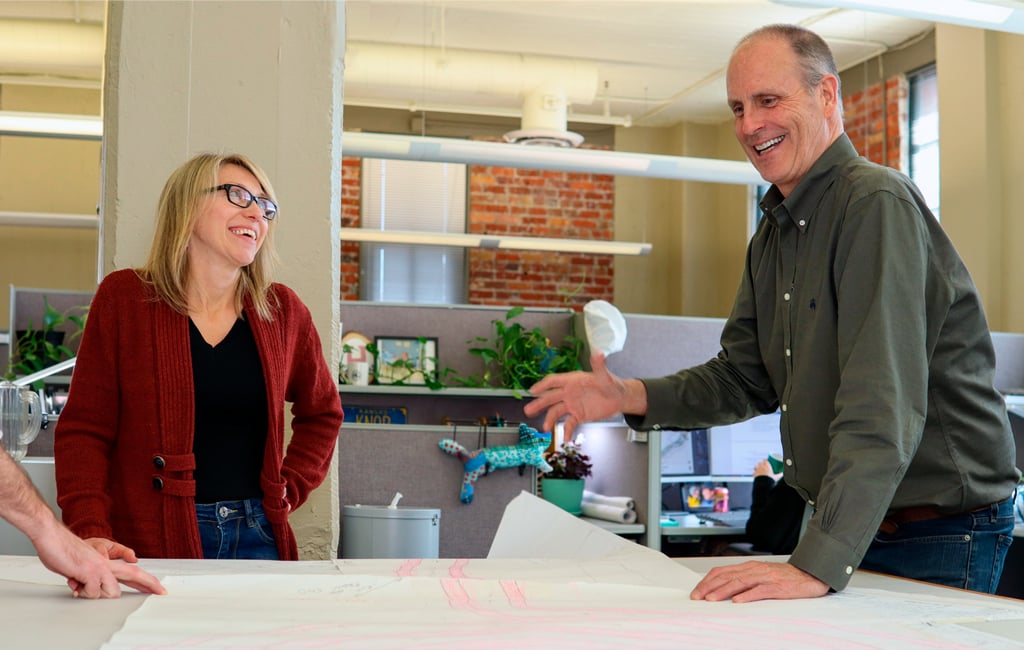
VHB: As someone with firsthand experience working in blended departments, you’ve seen this process of collaboration positively impact the outcome of projects. Is this important to VHB?
Charlene: It's not just important to VHB, it's an imperative. Our disciplines aren't just adjacent to each other operating siloed—we are completely interwoven. Collaberation is one of our eight core values at VHB and is even an identified strategic initiative for our region. We know that when our employees work together, they can leverage each other’s strengths, resulting in a more effective and efficient outcome.
Charlene has a passion for sustainability and reducing environmental impacts on the built environment. Connect with her via email or on LinkedIn.

